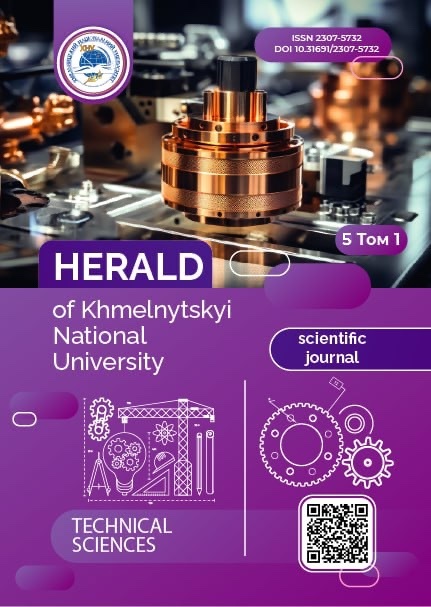COMPARATIVE FORCE ANALYSIS OF TUMBLING MACHINES IN TERMS OF DETERMINING REACTIONS IN KINEMATIC PAIRS OF HINGED SPATIAL MECHANISMS
DOI:
https://doi.org/10.31891/2307-5732-2025-357-35Keywords:
kinematic pair, automotive industry, cylindrical container, reactionAbstract
Tumbling operations can be performed using various types of equipment. The highest process intensity is achieved when using tumbling machines whose working containers perform complex spatial movements. To date, several types of such machines have been developed, each with specific design and technological features. These machines ensure efficient execution of a wide range of tumbling operations, including grinding, polishing, burnishing, surface strengthening of parts, removal of sprues, or mixing of materials. Structurally, these machines represent spatial mechanisms with complex kinematics, which are predominantly based on revolute kinematic pairs.
A significant area of practical application for tumbling operations is the automotive industry, where this process is widely used for finishing both metallic and non-metallic components. Tumbling is particularly effective in serial and mass production, where high productivity, consistent surface quality, and low processing cost are key requirements. The process enables high surface finish, burr removal, edge rounding, improved appearance, and enhanced functional characteristics of parts — all of which are critical for elements such as transmissions, suspensions, fasteners, and other essential automotive components. To ensure the reliability and longevity of such machines, accurate calculation of loads in kinematic pairs is essential. In the course of this study, a 3D model of a tumbling machine with two driving links was developed using the CAD software “SolidWorks.” In this design, the container performs complex spatial motion. A force analysis was carried out to determine the dependency of reactions in all revolute kinematic pairs on variations in the center distance of the cylindrical container. The study revealed how this geometric parameter influences peak reaction forces that may arise within the kinematic pairs of the machine. The obtained results should be taken into account when designing similar types of tumbling equipment, especially for applications in mechanical and automotive engineering.
Downloads
Published
Issue
Section
License
Copyright (c) 2025 МАРК ЗАЛЮБОВСЬКИЙ, БОРИС ЗЛОТЕНКО, ОЛЕКСІЙ ВОЛЯНИК, ВОЛОДИМИР ПОДПАЛОВ (Автор)

This work is licensed under a Creative Commons Attribution 4.0 International License.

